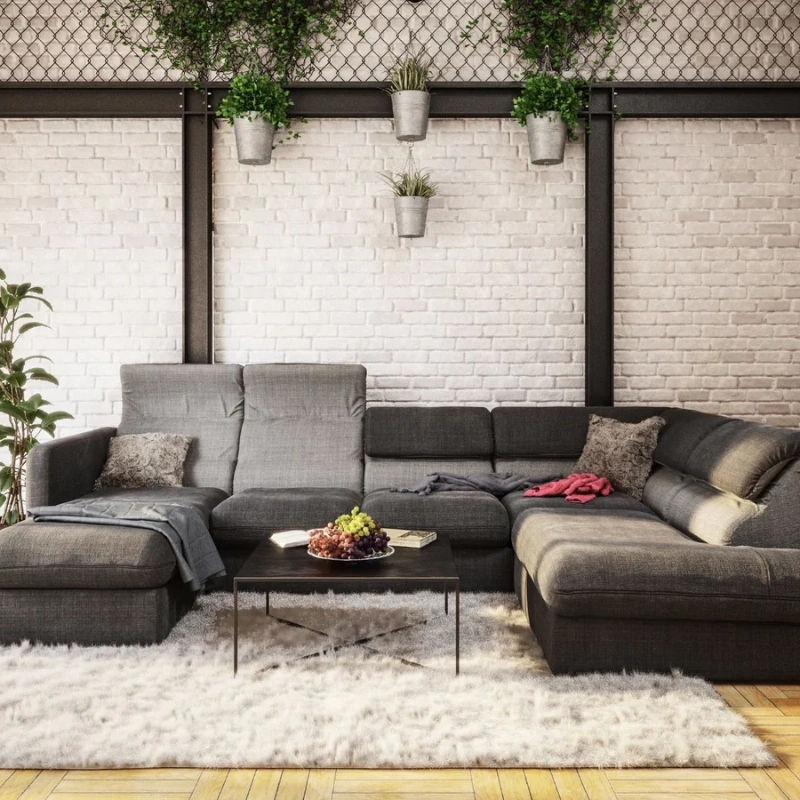
The Art and Science of Carpets: A Comprehensive Guide for Modern Living
In the realm of interior design, carpets stand as both functional art pieces and essential elements of comfort. Far more than just floor coverings, they are a blend of centuries-old craftsmanship, material science, and aesthetic philosophy. For homeowners and design enthusiasts alike, understanding the intricate world of carpets can transform space planning, elevate interior aesthetics, and enhance daily living experiences. This blog delves into the multifaceted universe of carpets, exploring their technical specifications, design principles, and cultural significance.
The Fundamentals of Carpet Construction: Weave, Material, and Structure
Weave Techniques: The Foundation of Durability and Design
Carpet construction begins with the weave, a critical factor determining both appearance and longevity. The three primary weave types are:
- Loop Pile: Created by forming uncut yarn loops, loop pile carpets like Berber offer exceptional durability and are ideal for high-traffic areas. The uniformity of loops can create textured patterns, while varying loop heights add dimensional interest.
- Cut Pile: In this technique, loops are cut to form individual tufts, resulting in a smooth, plush surface. Saxony and velvet carpets are classic cut pile examples, prized for their luxurious feel but requiring more delicate maintenance.
- Cut-Loop Pile: A combination of both techniques, cut-loop carpets allow for intricate designs and patterns. The contrast between cut and uncut loops creates visual depth, making them popular for decorative spaces.
Material Science: Yarns that Define Performance and Personality
The choice of yarn material dictates a carpet’s texture, durability, stain resistance, and environmental impact:
- Natural Fibers:
- Wool: Renowned for its softness, natural elasticity, and flame resistance, wool carpets are a premium choice. They regulate humidity, resist soiling, and age gracefully, though they require professional cleaning and are more expensive.
- Silk: Exuding opulence, silk carpets feature unparalleled sheen and intricate detailing. However, they are highly delicate, suitable only for low-traffic areas and demanding meticulous care.
- Cotton and Jute: These eco-friendly options offer breathability and a casual, organic aesthetic. Jute carpets, in particular, add texture to bohemian or coastal interiors but are prone to crushing and moisture damage.
- Synthetic Fibers:
- Nylon: The most popular synthetic choice, nylon carpets are durable, stain-resistant, and cost-effective. Innovations like solution-dyed nylon enhance colorfastness, making them suitable for households with pets or children.
- Polyester (PET): Derived from recycled plastic bottles, polyester offers vibrant colors and softness at a lower cost. It resists fading but is less durable than nylon, ideal for bedrooms or formal living areas.
- Olefin(Polypropylene): Known for its moisture resistance and low cost, olefin is perfect for outdoor or high-moisture indoor spaces like bathrooms. It lacks resilience, however, and may flatten over time.
Design Theory: Carpets as Spatial Anchors and Style Statements
Color Psychology and Spatial Perception
Carpets play a pivotal role in setting the mood and perceived size of a room:
- Warm Tones (Red, Orange, Yellow): These hues create intimacy and energy, making small rooms feel cozier. Use them in dining areas or home offices to stimulate conversation and focus.
- Cool Tones (Blue, Green, Purple): Evoking calm and spaciousness, cool colors are ideal for bedrooms and living rooms. Light blue carpets, for example, can mimic the tranquility of water, promoting relaxation.
- Neutrals (Beige, Gray, Cream): Versatile and timeless, neutral carpets serve as a backdrop for bold furniture or eclectic decor. They also create seamless transitions between open-concept spaces.
Pattern Design: From Tradition to Modernity
Patterns on carpets tell stories, reflecting cultural heritage or contemporary design trends:
- Traditional Patterns: Persian, Oriental, and Aubusson designs feature intricate motifs and rich color palettes, adding historical depth to classic interiors. These carpets often serve as focal points, demanding careful coordination with furniture scale and style.
- Modern Patterns: Geometric shapes, abstract designs, and minimalistic stripes characterize modern carpets. They complement sleek, contemporary spaces, with large-scale patterns creating visual drama and small-scale repeats adding subtle texture.
- Artistic Innovations: Collaborations between designers and carpet manufacturers have given rise to sculptural carpets, 3D textures, and even customizable designs. These pieces blur the line between flooring and art, allowing homeowners to express personal creativity.
Functional Considerations: Carpet Performance in Real-World Settings
Traffic Analysis: Matching Carpet to Usage
- High-Traffic Areas (Hallways, Living Rooms): Opt for low-pile, synthetic carpets with tight weaves (e.g., nylon loop pile). Look for built-in stain protection and soil resistance features.
- Low-Traffic Areas (Bedrooms, Studies): Here, luxury takes precedence. Plush cut-pile carpets in wool or polyester offer comfort underfoot, while intricate patterns can enhance the room’s aesthetic without fear of rapid wear.
- Specialized Spaces (Kitchens, Bathrooms, Outdoors): Moisture-resistant materials like olefin or synthetic blends are essential. Consider modular or low-pile options for easy cleaning and maintenance.
Maintenance Science: Prolonging Carpet Life
- Regular Vacuuming: Removes up to 80% of dry soil, preventing abrasive particles from damaging fibers. Use HEPA filters to capture allergens effectively.
- Professional Cleaning: Hot water extraction (steam cleaning) is recommended every 12-18 months for most carpets. Always check manufacturer guidelines to avoid damaging delicate fibers like wool.
- Stain Management: Blot, don’t rub, spills immediately. Use pH-neutral cleaners for synthetic carpets; wool requires specialized products to maintain fiber integrity.
Cultural and Environmental Perspectives: The Global Journey of Carpets
Historical Significance
Carpets have been integral to human culture for millennia. Ancient Egyptian tombs featured woven reed mats, while Persian carpet-making reached artistic heights during the Safavid dynasty, with designs symbolizing celestial maps and garden paradises. In nomadic cultures, carpets served as portable homes, their patterns carrying tribal identities and spiritual meanings.
Sustainable Practices in Modern Manufacturing
Today’s carpet industry is embracing sustainability:
- Recycled Materials: Many brands now use post-consumer recycled content in yarns and backing materials, reducing reliance on virgin plastics.
- Eco-Friendly Dyes: Water-based, low-VOC dyes minimize environmental impact while ensuring vibrant, long-lasting colors.
- End-of-Life Solutions: Some manufacturers offer take-back programs, recycling old carpets into new products or using them for industrial applications.
Choosing the Perfect Carpet: A Step-by-Step Guide
- Define Purpose: Determine the room’s function, traffic level, and desired aesthetic.
- Material Selection: Balance durability, comfort, and budget. Consider environmental impact if sustainability is a priority.
- Weave and Pile Choice: Match weave type to usage (e.g., cut pile for luxury, loop pile for durability).
- Color and Pattern: Align with the room’s existing palette and design style. Test samples in the space to see how they interact with natural and artificial light.
- Professional Installation: Proper padding and installation ensure even wear and prevent buckling or rippling.
Conclusion: Carpets as a Reflection of Lifestyle and Taste
A carpet is more than a purchase; it’s an investment in living space. By understanding the interplay of material science, design theory, and functional requirements, you can select a carpet that not only enhances your home’s beauty but also withstands the test of time. Whether you’re drawn to the timeless elegance of a hand-knotted wool rug or the practicality of a stain-resistant nylon carpet, the right choice will transform your floors into a canvas of comfort and style.
At [Your Company Name], we are committed to bringing you the finest carpets that blend innovation, craftsmanship, and sustainability. Explore our collection today and discover how a carpet can redefine your living experience. Share your carpet stories with us in the comments – we’d love to hear how you’ve used these versatile floor coverings to create spaces that feel uniquely yours.


